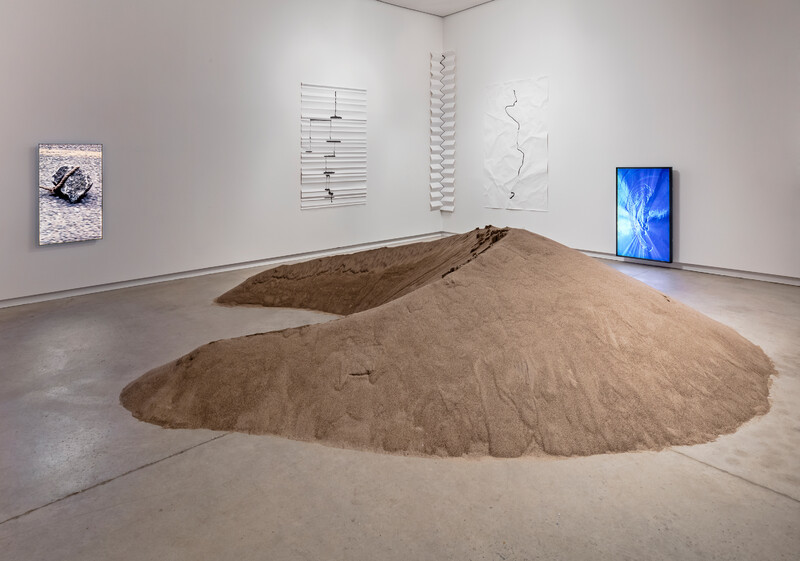
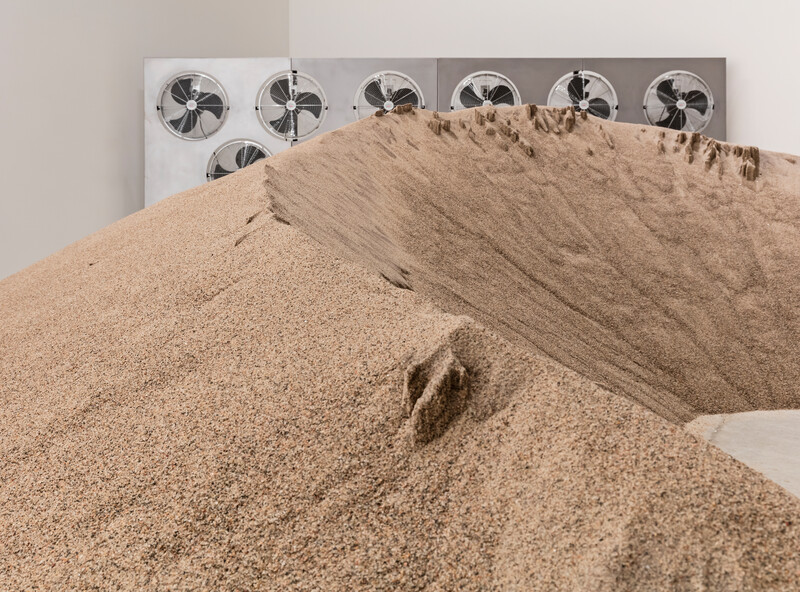

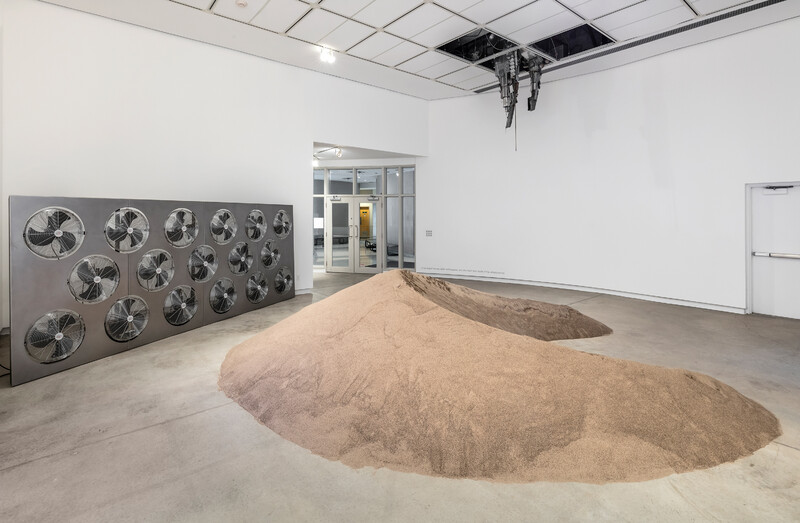
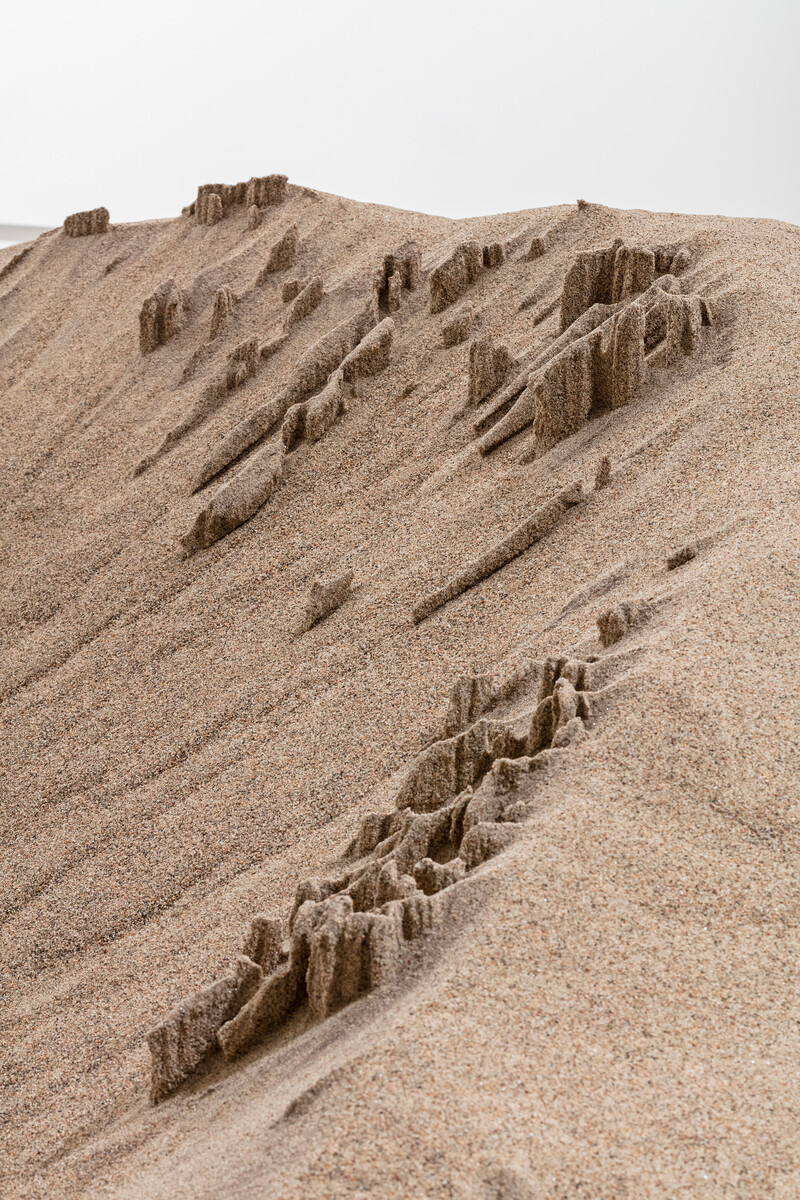
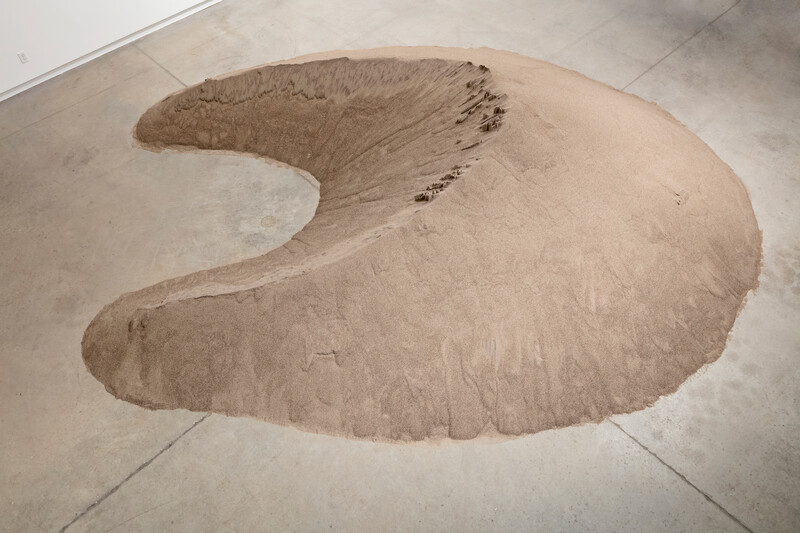
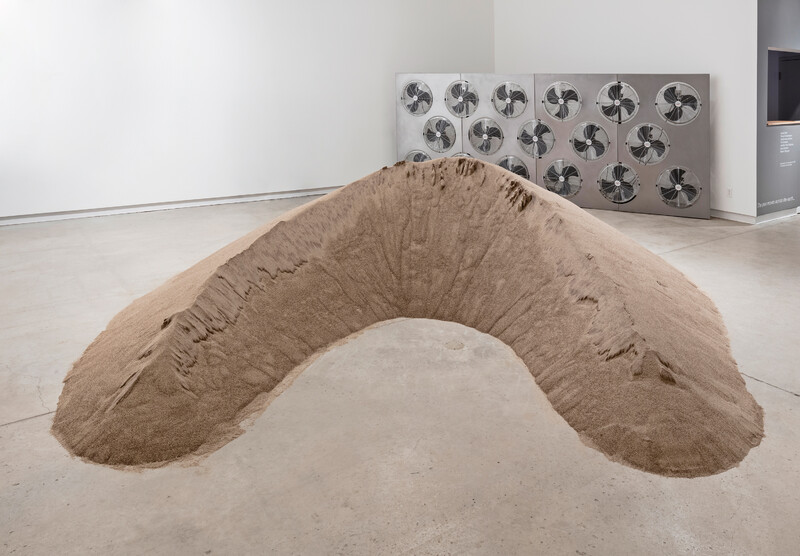
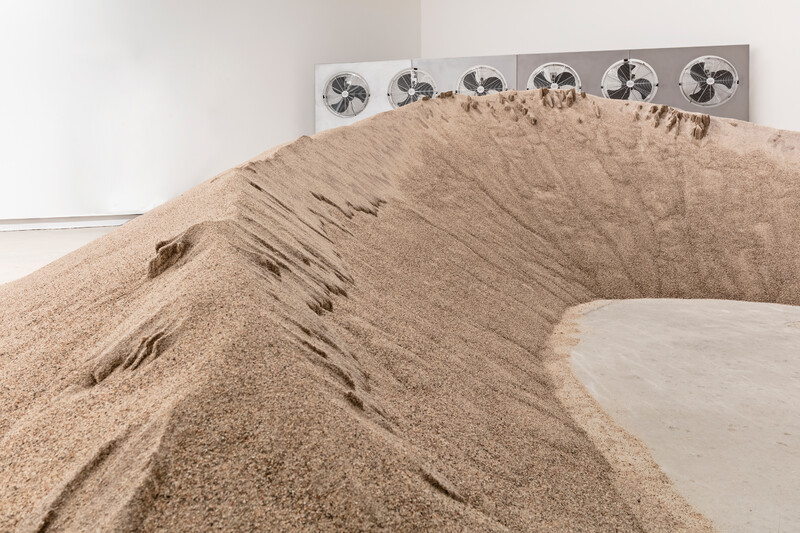
traction
Robert Wysocki’s "site-specific" installation suggests desert physiography: dunes, mesas, buttes, mushroom mounds, and other ‘deflations’ (the removal of material from beaches and other surfaces by wind action). In traction, Wysocki uses 17 industrial floor fans as nature’s surrogate to push 30,000 pounds of sand across the Blackwood Gallery floor into a crescent-shaped dune. The dune continuously recomposes itself, eroding on one side and building up on the other. Like Robert Smithson’s flow works, Wyoscki’s dune is “entropy made visible.”
The shear physical execution and perfect replication of a dune at first distracts, but then leads to a state of contemplation. We find ourselves involved in the minute granular relationships, the slip face, pointy peaks, and seductive patterns. We marvel at how the grains get along so well, how they move together, and how they miraculously find each other after being blown about. But then we wonder, how did the sand get here? Where did it come from? And here is where a critical relation to the nature of the sand itself emerges. traction points to how technology has made incursions on—and wholly transformed—the natural.

The Blackwood
University of Toronto Mississauga
3359 Mississauga Road
Mississauga, ON L5L 1C6
[email protected]
(905) 828-3789
The galleries are currently closed.
Facebook | Twitter | Instagram
Sign up to receive our newsletter.
The Blackwood is situated on the Territory of the Mississaugas of the Credit, Seneca, and Huron-Wendat.